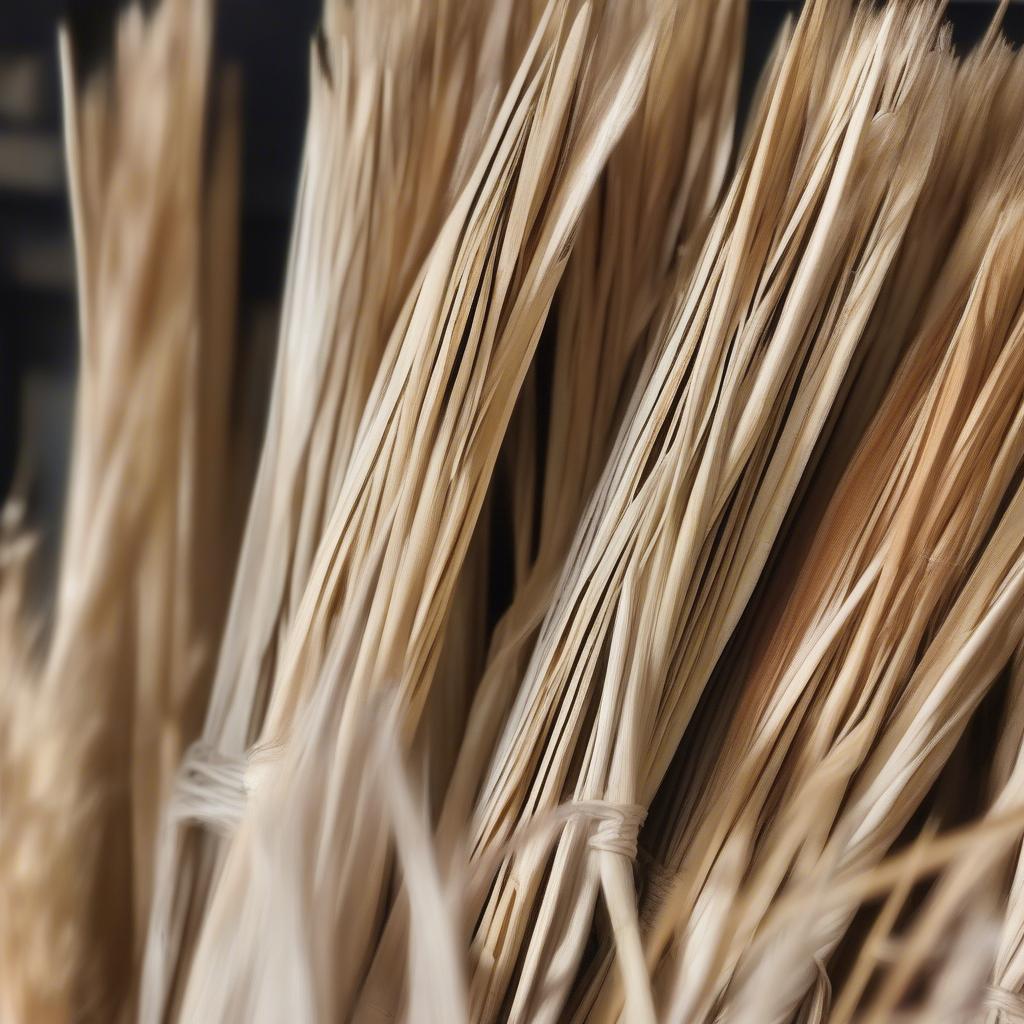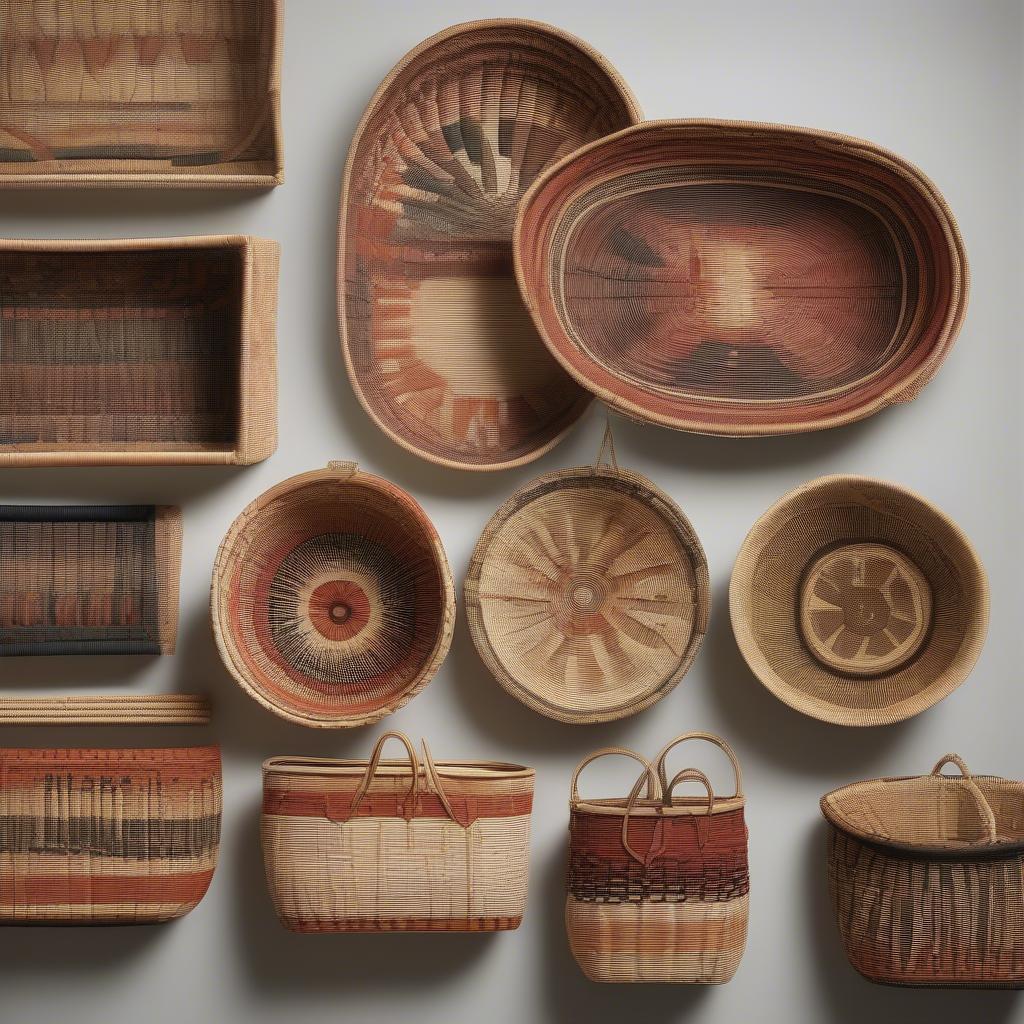Basket Weaving
Reed Used for Basket Weaving: A Comprehensive Guide
Reed is a fundamental material in the world of basket weaving, offering both strength and flexibility. Understanding the different types of reed, their unique properties, and how to prepare them is essential for creating beautiful and durable baskets. This guide will delve into everything you need to know about Reed Used For Basket Weaving, from its origins to its applications.
Exploring the Varieties of Reed Used in Basketry
Reed isn’t a single entity but rather a category encompassing various plant materials. Knowing the distinction between these varieties will help you choose the right reed for your project. Common types include:
- Common Reed (Phragmites australis): A widely available and robust reed, perfect for beginners and large projects.
 Common Reed Used in Basket Weaving
Common Reed Used in Basket Weaving - River Cane (Arundinaria gigantea): Native to North America, river cane is known for its strength and flexibility, historically used by Native American tribes.
- Seagrass: A durable and water-resistant option, ideal for coastal-inspired baskets and projects requiring exposure to moisture.
Preparing Reed for Weaving: A Step-by-Step Guide
Proper preparation is crucial for successful basket weaving. This process ensures the reed is pliable and easy to work with, preventing breakage and ensuring a smooth finish.
- Soaking: Submerge the reed in warm water for a specific duration depending on the type of reed. Common reed typically requires 30-60 minutes, while river cane may need several hours or even overnight soaking.
- Wrapping: Once soaked, wrap the reed in a damp towel to maintain its moisture and pliability. This prevents it from drying out and becoming brittle during the weaving process.
 Wrapped Reed for Basket Making
Wrapped Reed for Basket Making - Weaving: Begin weaving while the reed is still damp and flexible. This allows for easy manipulation and tight weaving patterns. [how to make weaving basket](https://basketweavee.com/how-to make-weaving-basket/) offers a detailed guide on basic weaving techniques.
- Drying: After completing the basket, allow it to dry naturally in a well-ventilated area. This process sets the shape and tightens the weave.
Understanding the Properties of Reed
Different reeds possess unique properties that influence their suitability for various basketry projects.
- Strength: River cane is renowned for its exceptional strength, making it ideal for sturdy baskets. cane basket weaving instructions will guide you through using this material.
- Flexibility: Common reed offers good flexibility, allowing for intricate weaving patterns and designs.
- Durability: Seagrass is highly durable and resistant to water damage, making it perfect for outdoor use.
Reed Basket Weaving: A Timeless Craft
Basket weaving with reed is a craft with a rich history, spanning cultures and generations. From functional storage solutions to decorative art pieces, reed baskets showcase the versatility and beauty of this natural material. hadicaped man weaving a basket with his feet demonstrates the incredible adaptability of this craft.
“Reed basketry is a testament to the enduring connection between humans and nature,” says renowned basket weaver, Anya Petrova. “Each basket tells a story, woven with the hands and heart of the artisan.”
Which reed is best for beginners?
Common reed is generally recommended for beginners due to its availability and ease of use.
How long does reed need to soak?
Soaking times vary depending on the type of reed. Common reed typically needs 30-60 minutes.
Where can I buy reed for basket weaving?
Reed can be purchased online, at craft stores, or from specialized basketry suppliers.
Reed: The Heart of Basket Weaving
Choosing the right reed used for basket weaving is crucial for achieving your desired results. By understanding the different varieties, their properties, and proper preparation techniques, you can create beautiful and lasting baskets. “The beauty of reed lies in its simplicity and strength,” notes artisan basket maker, Javier Ramirez. “It allows us to transform a natural material into functional art.” basket weaving christmas template offers inspiring project ideas.  Variety of Reed Baskets pierre basket weave weller offers more information on specific weaving techniques.
Variety of Reed Baskets pierre basket weave weller offers more information on specific weaving techniques.
FAQ
- What is the most common type of reed used in basket weaving? Common reed (Phragmites australis) is widely used due to its availability and versatility.
- How do I prepare reed for weaving? Soak the reed in warm water, wrap it in a damp towel, and weave while it’s still pliable.
- What are the benefits of using reed for basket weaving? Reed is strong, flexible, and readily available, making it an excellent material for basketry.
- What is the difference between common reed and river cane? While both are used in basketry, river cane is generally stronger and more durable than common reed.
- Where can I learn more about basket weaving techniques? Online resources, books, and local craft classes offer excellent opportunities to learn more about basket weaving.
- How do I store reed? Store dried reed in a cool, dry place to prevent mold and mildew.
- What other materials can be used for basket weaving? Besides reed, materials like willow, seagrass, and pine needles can be used for basket weaving.
Need assistance with your basket weaving endeavors? Contact us at Hanoi, Vietnam or Tech Avenue, Suite 12, San Francisco, CA 94105, USA. Our 24/7 customer support team is ready to help.
